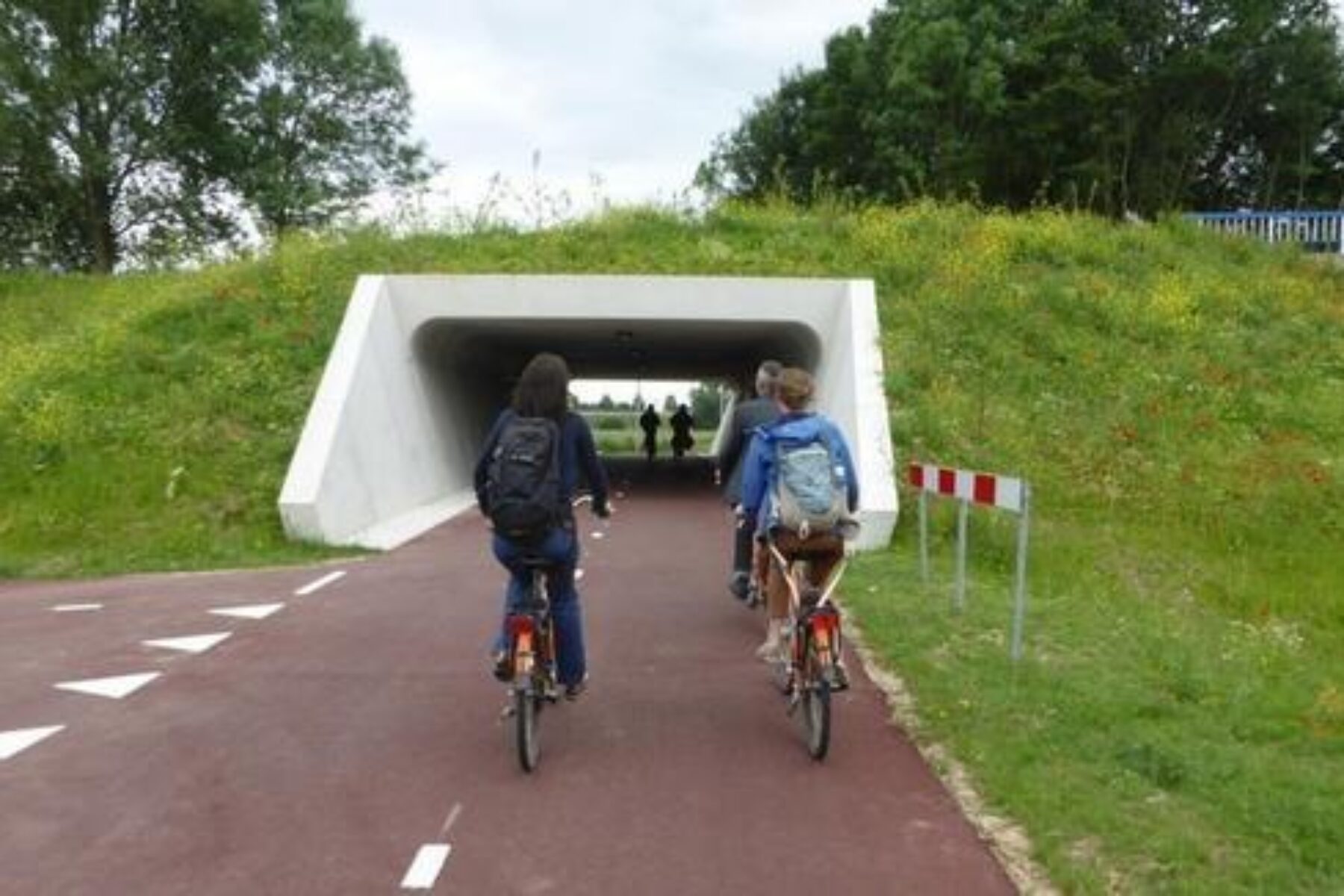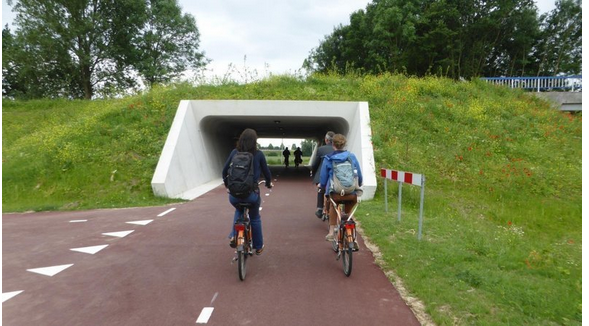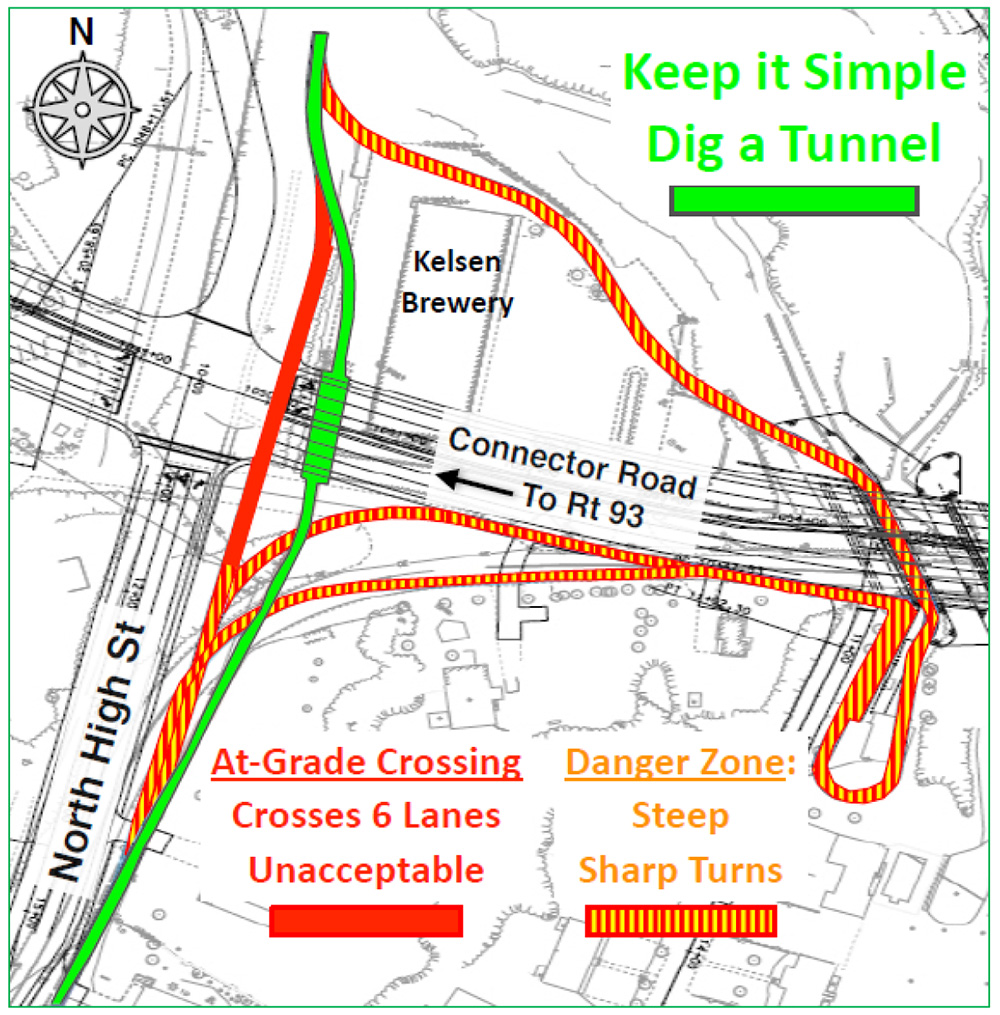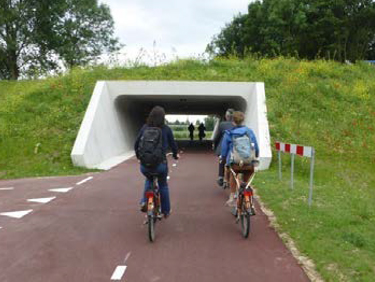Advocates Sue New Hampshire Department of Transportation and Federal Highway Administration Over Elimination of Derry Rail Trail Tunnel

For Immediate Release: Aug. 26, 2024
Committee to Save the Derry Rail Trail Tunnel Contact: Bob Spiegelman, 603.490.0012, robertspiegelman@comcast.net
Rails to Trails Conservancy Contact: Brandi Horton, 202.974.5155, brandi@railstotrails.org
Complaint Cites Violation of Federal Regulations as Reason to Halt Construction of Exit 4A I-93 Expansion That Will Dismantle Historic Rail Corridor, Creating Safety Hazards for Community
Concord, New Hampshire—The Committee to Save the Derry Rail Trail Tunnel and Rails to Trails Conservancy announced today that they have filed a complaint in the United States District Court in Concord, New Hampshire, seeking to halt construction of Phase 2 of the Exit 4A I-93 expansion in Derry.
The complaint alleges that the New Hampshire Department of Transportation (NHDOT) and the Federal Highway Administration’s (FHWA) New Hampshire Division failed to comply with federal law protecting the Manchester & Lawrence Railroad Historic District and the Derry Rail Trail. The complaint centers on a design change, proposed by NHDOT and approved by FHWA in 2024, that removes a previously planned tunnel slated to protect the historic right-of-way from a six-lane exit road, replacing it with a steep, at-grade crosswalk and a circuitous, steeply sloped route that abandons the historic railroad corridor.
“The actions of NHDOT and FHWA are in direct violation of federal law, and they make little sense. The new design completely obliterates the historic rail corridor within the project area, leaving nothing that resembles any feel of being where trains previously ran. The Derry Rail Trail Tunnel has been completely jettisoned, even though it is the most common-sense approach and would keep many thousands of anticipated users safe while preserving the integrity of the historic corridor,” said Alex Vogt, a retired NHDOT Engineer.
NHDOT originally proposed including an underpass in the Project to allow for the planned expansion of the Derry Rail Trail through the Manchester & Lawrence Railroad Historic District. This decision prioritized minimizing harm to the historic railroad corridor by providing a tunnel for the Derry Rail Trail along the corridor’s original alignment. This design also would have provided significant safety benefits to the many thousands of people who are expected to use the Derry Rail Trail. NHDOT’s documentation supporting the original design, approved in 2020 (2020 FEIS, Chapter 7, page 7-18), stated that the Project “would be further enhanced by the construction of a suitably designed underpass that is complementary to the historic railroad corridor. With incorporation of these measures, the Project would preserve and enhance the historic features and values of the rail corridor, resulting in a net benefit use.”
Despite these benefits, an alternate “spaghetti loop” design, which unnecessarily harms a historic segment of the railroad corridor in violation of federal law, was introduced in 2022 and approved in 2024. Only one public meeting was held to review the alternate design, where public opposition was extensive, in part because of the safety concerns it introduces to the community. The alternate design includes steep grades of nearly 5%, sharp curves and an at-grade crosswalk at the new six-lane Folsom Road. This design creates unnecessary hazards for the many thousands of bicyclists and pedestrians expected to use the trail and the people traveling in 40,000 vehicles projected to use the road daily. Further, the pedestrian-walk phase of the crossing signal planned for these six lanes is unprotected from turning vehicles and does not provide sufficient time for older individuals and people with disabilities to cross.
“The design that NHDOT has approved brings layers of negative impact to the community. It dismantles a historic railroad corridor and introduces significant safety threats. Many thousands of people are expected to use this corridor every week—whether they’re walking, biking or using ADA-compliant mobility devices. Their safety was never considered, which is tragic and unacceptable,” said Committee and RTC member Dave Topham, who has advocated for transportation, bicyclist and pedestrian safety in New Hampshire for decades.
The suit alleges that, by approving this new design approach, FHWA has violated historic preservation protections provided by federal law—specifically, Section 4(f), which forbids FHWA from approving transportation projects that will damage parks or historic sites, unless there are no prudent and feasible alternatives that would avoid the historic site and the agency has undertaken all possible planning to minimize harm to the site. The suit alleges that the original design plan demonstrates that there exists a reasonable alternative that would better protect the historic rail corridor, which advocates say will also improve the safety of the future rail-trail connection and create better trail system linkages.
“Federal laws like Section 4(f) are designed to minimize the harm that transportation projects can bring to historic places and trails. These laws are important tools in the protection of many rail-trail corridors, which create access to safe spaces to walk, bike and be active for millions of Americans. This case will set important precedent for the actions of FHWA and state departments of transportation, helping to ensure that the historic assets of the places we live are protected as are the opportunities these spaces create to make it safer for people to get outside and get around their communities,” said Ryan Chao, president of RTC, the nation’s largest trails, walking and biking advocacy organization, and the foremost legal advocate for rail-trails in the U.S.
Wayne Morris, a Committee member from the adjacent town of Windham, shared his personal perspective on the design. “I am relatively healthy and ride my bike often. Regardless, I still struggle to make it up a straight hill with a 5% grade. The proposed ‘spaghetti loop’ design in Derry mixes grades that are nearly 5% with a hairpin turn, which is frankly dangerous and will make it even harder to get to the top of the long hill. It will be a challenge for me and for most people, not to mention a real safety hazard that will prevent many people from using it altogether. This design causes far more harm than good—to the historical value of our community and the safety of the people who live here.”
“My professional opinion is that this ‘spaghetti loop’ trail design is unsafe. The steep and sharp curves are poor engineering, shoe-horned to fit into the available space, which will create dangerously fast speeds. The only design option that will meet rail-trail standards and the related expectation of safety is the tunnel under the new Folsom Road,” said Vogt.
The Committee to Save the Derry Rail Trail Tunnel is a New Hampshire not-for-profit corporation comprised of experienced cycling advocates and cyclists from throughout New Hampshire who are concerned about the safety of rail-trail users and the preservation of historic railroad corridors.
Rails to Trails Conservancy is the nation’s largest trails advocacy organization—with a grassroots community more than 1 million strong—dedicated to building a nation connected by trails, reimagining public and historic spaces to create safe ways for everyone to walk, bike and be active outdoors.
The Committee and RTC are represented in the lawsuit by WilmerHale, an international law firm.
VISUAL REPRESENTATIONS OF PREFERRED AND “SPAGHETTI LOOP” DESIGNS




Donate
Everyone deserves access to safe ways to walk, bike, and be active outdoors.